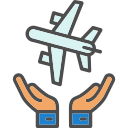Airspace, Rules, and Responsibility
Within a Temporary Flight Restriction, drone flights defer to Air Attack and helibase plans. Clear comms and geofenced keep-out zones prevent conflicts. Share how your team handles immediate shutdown when manned aircraft arrive unexpectedly over the incident.
Airspace, Rules, and Responsibility
Remote pilots need certification and currency; in the U.S., Part 107 plus waivers cover BVLOS and night operations with anti-collision lighting. EASA’s Specific category requires risk assessments. Contribute your training roadmap and recurrent drills that build true proficiency.
